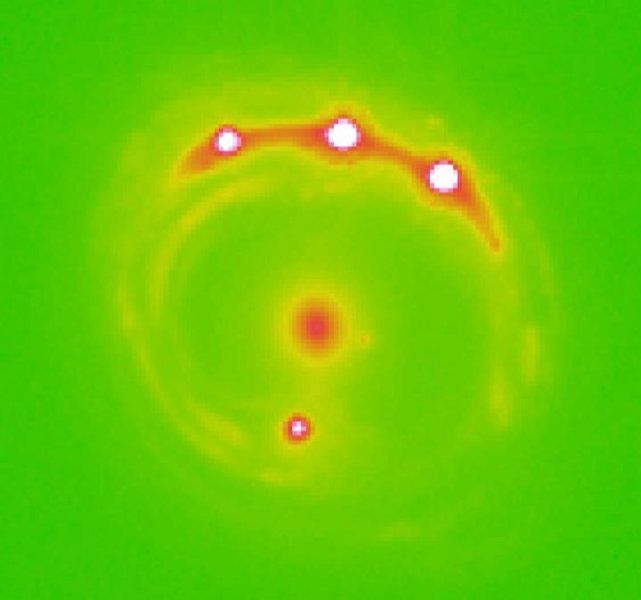
Until now, the only planets ever discovered sat within the boundaries of the Milky Way. For the first time ever, astrophysicists have found a population of planets beyond the edge of our galaxy.
An exoplanet is one which orbits a star outside of our solar system. More than 3,500 of these have been found within the Milky Way using telescopes like the planet-hunting Kepler Space Telescope. These newly discovered extragalactic planets, however, sit some 3.8 billion years away.
Xinyu Dai and Eduardo Guerras from the University of Oklahoma have used a technique called microlensing, among others, to find the extremely distant objects. Their results were published in The Astrophysical Journal.
An exo-world-first
A strange effect called microlensing—where large objects bend and magnify light from objects behind them—gave the scientists a window into the planet population. Modeling and explaining the signature from this highly magnified light revealed the group of planets.
"This is an example of how powerful the techniques of analysis of extragalactic microlensing can be. This galaxy is located 3.8 billion light years away, and there is not the slightest chance of observing these planets directly, not even with the best telescope one can imagine in a science fiction scenario," said postdoctoral researcher Guerras. "However, we are able to study them, unveil their presence and even have an idea of their masses. This is very cool science."
Space telescopes and supercomputers
Raw data from the planets was gathered by NASA's Chandra X-ray Observatory. Dai and Guerra analyzed it using the University of Oklahoma's Supercomputer Center for Education and Research.
They found planets as small as the moon and as large as Jupiter sitting outside of our galaxy. Dai explained: "These small planets are the best candidate for the signature we observed in this study using the microlensing technique. We analyzed the high frequency of the signature by modeling the data to determine the mass."
Astronomers recently imaged the most distant galaxy ever in some detail using a similar lensing phenomenon. It is the only way scientists can, as yet, hunt planets at truly great distances from Earth.
Uncommon Knowledge
Newsweek is committed to challenging conventional wisdom and finding connections in the search for common ground.
Newsweek is committed to challenging conventional wisdom and finding connections in the search for common ground.
About the writer
Katherine Hignett is a reporter based in London. She currently covers current affairs, health and science. Prior to joining Newsweek ... Read more
To read how Newsweek uses AI as a newsroom tool, Click here.








